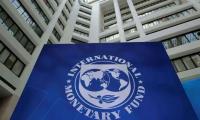Pakistan has shown a significant decline in poverty, from 50.4 percent in 2005-06 to 24.3 percent in 2015-16, both at the regional and national levels.
However, despite the significant decline in poverty, over 50 million people live in poverty and more than 75 million people are deprived of basic needs such as health, education and shelter. Furthermore, Pakistan suffers from extreme forms of social exclusion and significant infrastructure gaps. Economic growth has not resulted in job creation at the rate necessary to accommodate the approximately 1.5 million people who enter the workforce every year in Pakistan.
Human capital (HC) indicators, namely education and health, show miserable progress as compared to the rest of the South Asian region. According to the World Bank report, ‘World Development Report 2019: The Changing Nature of Work’, “HC consists of the knowledge, skills and health that people accumulate over their lives, enabling them to realize their potential as productive members of society. HC has large payoffs for economic growth – between ten and 30 percent of per capita income differences is attributable to cross-country differences in human capital”.
According to this report, in 2017, Pakistan’s human capital index (HCI) was lower than the average for its region and income group. Pakistan ranked 134 while India ranked 115, Bangladesh 106 and Sri Lank 74 out of 157 countries. Pakistan has one of the lowest female labour force participation rates in the region.
Education poverty is very high in Pakistan due to low education capital. Children in Pakistan can expect to complete 8.8 years of pre-primary, primary and secondary school by age 18. However, when the years of schooling are adjusted for quality of learning, it is only equivalent to 4.8 years: a learning gap of four years.
According to a Pakistan Education Statistics report, over 22.84 million children are still out of school (that’s 44 percent of our total children). The report says that 70 percent of the children in Balochistan, 57 percent in Fata and 52 percent in Sindh are out of school. The report has shown that 26 percent primary schools are operated by a single teacher whereas 18 percent of the schools consist of one classroom and 32 percent are run without electricity, 22 percent without toilets, 21 percent without boundary walls and 22 percent without drinking water. While seven percent of the total primary schools in the country are without buildings. Public spending on education is only 2.2 percent of GDP in FY2017.
A similar situation can be observed in the health sector. The World Bank report shows that 45 out of 100 children are stunted, and so at risk of cognitive and physical limitations that can last a lifetime. The ratio is very high compared to other developing countries like India (38), Bangladesh (36) and Sri Lanka (17). Pakistan has shown slow progress on maternal mortality and child mortality rates over time. The maternal mortality ratio is very high as compared with other countries in the region (178 per 100,000 live births) in 2015. Similarly, infant mortality rate is very high in Pakistan (66 per 1,000 live births).
Apart from low investment in the health sector, rapid population growth is resulting in the inadequacy of healthcare facilities. This is reflected in estimates that show 957 persons against one doctor, and one dentist per 9,730 persons. The current ratio of population and availability of hospital beds works out at 1,580 persons per bed in 2017-18. Public spending on health was only 0.9 percent of GDP in FY2017.
Investing in human capital – “including childhood development, skills for jobs, and equal opportunities in education, health, and training” – is key to ending poverty and promoting shared prosperity and inclusive growth. This investment not only promotes inclusive and sustainable growth but also establishes social capital that acts as a shield against instability, violence and conflict.
Lack of financial resources, inefficient legal framework, weak planning and spending capacity and prevalence of corruption are major factors that lead to low investment in HC. The World Bank report argues that “individuals and families often cannot afford the costs of acquiring human capital. Even when human capital investments are affordable, individual decisions may be shaped by lack of information, or restricted because of the prevalent social norms. Individuals also do not necessarily consider the wider social benefits for others”.
There is a need to develop a comprehensive strategy that address both supply and demand-side bottlenecks. For these reasons, governments have an important role to play in fostering human capital acquisition.
On the supply side, there is a need to enhance education and health facilities both in terms of quality and quantity across Pakistan – especially in southern Punjab, interior Sindh, Khyber Pakhtunkhwa and Balochistan. To eradicate education and health deprivation, area-specific policies are required to make efficient use of scarce resources. The government should ensure the provision of education and health facilities at the local level, especially at the village level.
Apart from the provision of these facilities, the government should develop a monitoring mechanism to track the progress and service delivery of these facilities. Both the federal and provincial governments should revisit the federal and provincial arrangements in education and health sectors after the 18th Amendment, to formulate uniform policy in education and health. There is a need to revisit the health services delivery model. Provision of a health card may not be a good strategy to eliminate the health provision. Similarly, uniform education for all citizens with equal access should be ensured.
On the demand side, there is a need to develop awareness among the people to highlight the importance of education and health, especially among poor people. Poor families mainly struggle with short-term consumption smoothening. For them, there is a trade-off between income earned by the children (child labor) and cost of education in terms of time and money. Due to lack of information on the wider social benefits of education and health, these families prefer short-term benefits by preferring employment instead of education.
To tackle this issue, the government should launch conditional cash transfer (CCT) programmes to promote education and health for poor people. The package of CCT programmes should cover both monetary and non-monetary benefits for these families. Currently, the Benazir Income Support Programme (BISP) is running a CCT program to promote education among poor families in a few districts. BISP pays Rs250 per month as a stipend to increase primary school enrolment. This programme should be expanded at the national level with better incentives.
Women can play an important role in promoting HC. Empowering women can improve the social indicators of households. BISP is the best example of this and evidence shows that BISP is associated with an increase in expenditure on health and education.
Well-targeted communication strategies should be devised to highlight the importance of HC. In this, the media can play a very significant role. HC is very low in the underdeveloped regions of the country. A possible communication strategy should target these areas. The government should use local social capital to create awareness among these families on the future returnof HC.
The writer is associate professor at the Pakistan Institute of
Development Economics (PIDE).
Email: dr.iqbaln@gmail.com
Representational image. — APP FileOnce again there is debate surrounding the National Finance Commission Award,...
Pakistani human rights activist and Supreme Court lawyer Asma Jahangir died on February 11, 2018. — AFPAn annual...
Representational image. — APP FileThe meltdown of Pakistan’s economy needs immediate attention. Political unrest...
A health worker administers polio vaccine drops to a child during a door-to-door polio vaccination campaign in Lahore,...
Armed militants of the banned Tehreek-e-Taliban Pakistan pose for a photograph in Orakzai Agency. —...
An aeroplane of the national flag carrier of Pakistan is seen in this file photo. — AFPWhile Pakistan considers...







